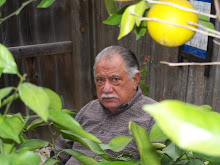I have said and will repeat it here, that all Presidents of Mexico, as they seat on their desk for the first time and see the "magic" book, know that Agroindustrial Development, today forcibly mixed with Industrial Electronic Development, is a must for the country. Finding "engineers doers", I call them Executors that can live in the townships where the factories are needed, day in and day out for years, is another matter.
Imagine the same for Africa with many Agroindustrial Development projects possible, imagine the same for South Texas with the Mesquite were thousands of jobs could be directly and indirectly created, all, Mexico, Africa, South Texas in dire need of EXECUTORS.
Back to the subject at hand, in 1996 and as head of the Texas A & M - Kingsville, Center for Semi-Arid Forest Resources, Peter Felker and James Moss, as hosts put together this conference on Prosopis: Semiarid Fuelwood and Forage Tree Building Consensus for the Disenfranchised, the 13-16 of March of 1996, in Washingto DC.
Will imagine you have enough references to find the Memoirs of said Workshop, but I will give you here what I consider the most important citations to entice you to look at the mesquite as your next investment:
Quote from said memoirs:
"It is useful to cite illustrative economic data:
- In the Chaco Province of northwestern Argentina, 140,000 tons / year of Prosopis logs are harvested for furniture and flooring.
- In the state of Texas, 15,000 tons of Prosopis chips and chunks are processed yearly for sale in retail stores across the United States. Also, in the United States, a small but fast growing Prosopis lumber, flooring, and furniture market has developed.
- In Peru, 180,000 tons of Prosopis pods are used annually for livestock feed.
- In Mexico in 1970, 40,000 tons of Prosopis pods of Prosopis pods were used annually for livestock feed.
- In Gujarat state of India, 300,000 30 kg bags of Prosopis charcoal are produced each year for sale in large cities.
- In Haiti in 1991, the total value of the charcoal industry (principally resulting from Prosopis) was $50 million, and the charcoal industry supported 150,0000 people.
- In the Sahel, about 16 million cubic meters of firewood are required per year. Senegal imports 50,000 cubic meters of wood each year from neighboring countries. Prosopis is a major provider of firewood for Senegal."

 Grinding the washed, dried, mesquite beans, seaved with home seave, keep in closed jar.
Grinding the washed, dried, mesquite beans, seaved with home seave, keep in closed jar. A slice of mesquite flavored bread
A slice of mesquite flavored bread

 Hand tools / saw milled wood
Hand tools / saw milled wood


